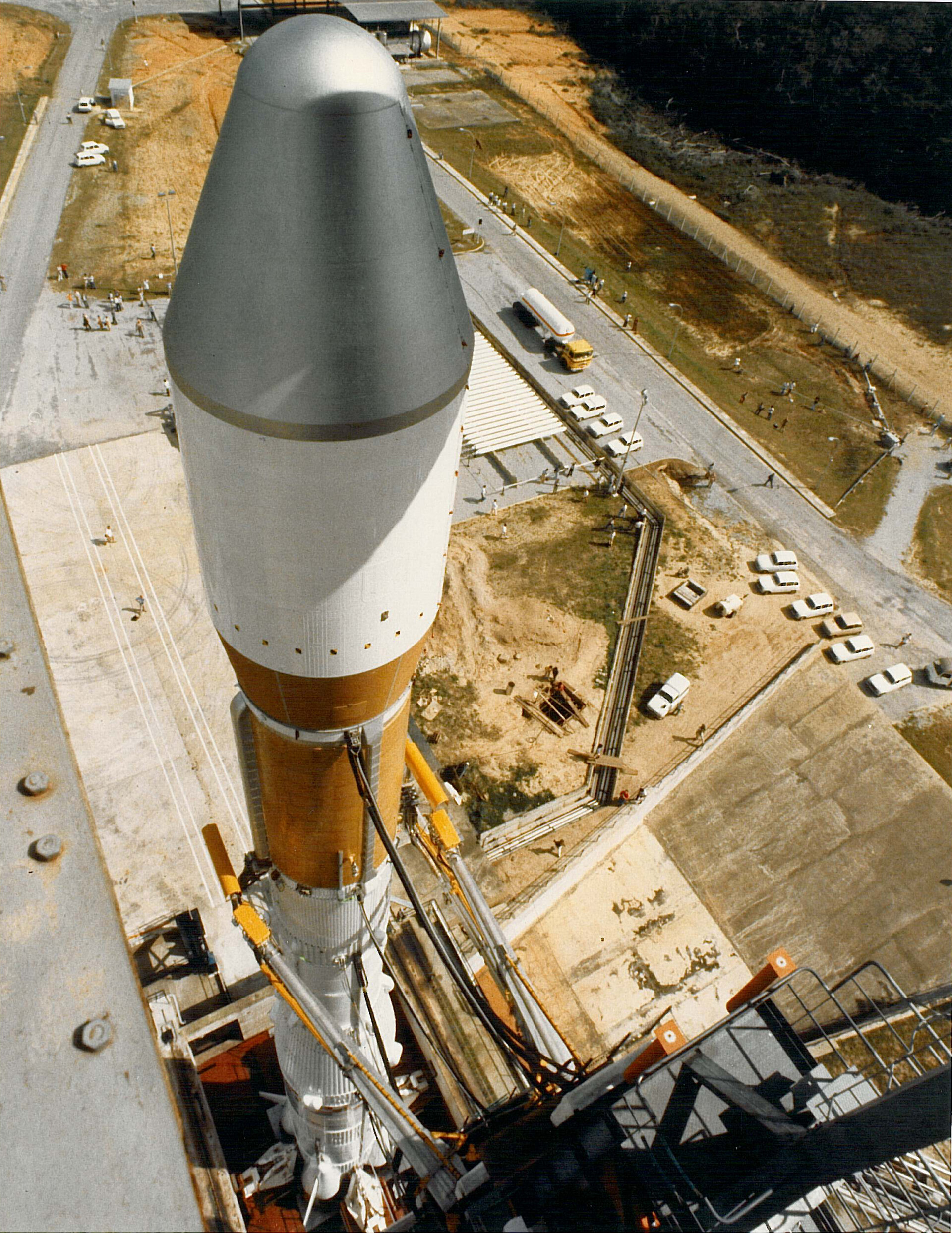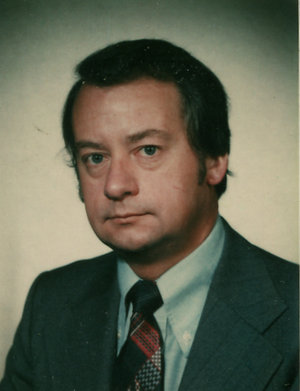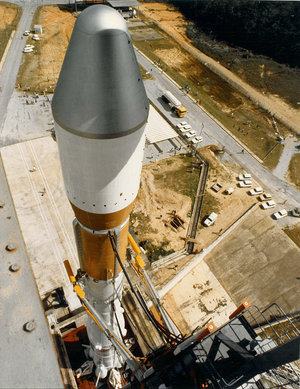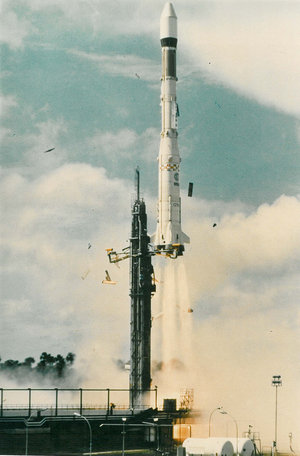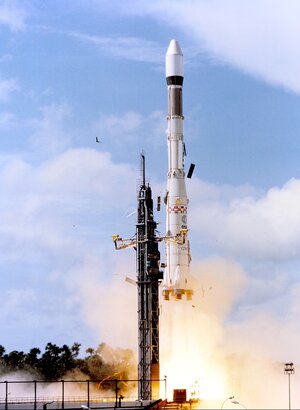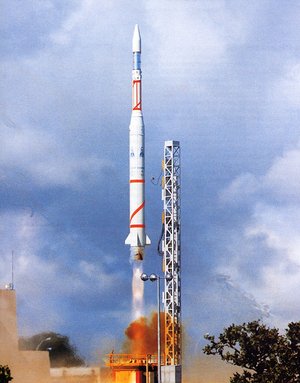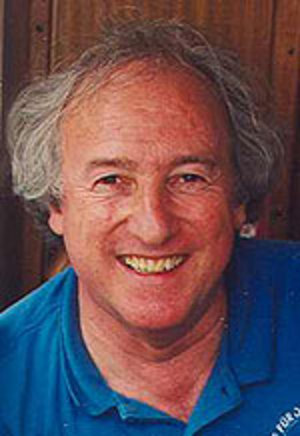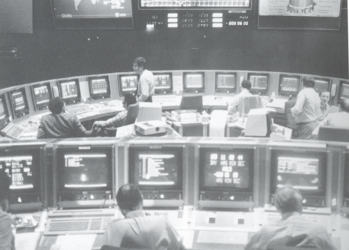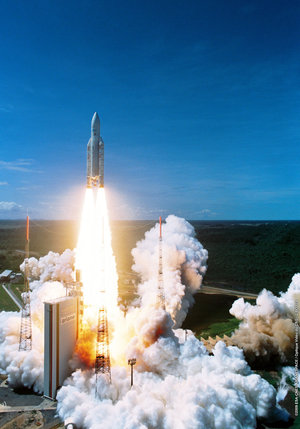Part 3 - Preparing for the launch
On 10 December, the Dress Rehearsal (Répetition Générale) took place. It was the first time that I occupied my seat in the Control Room in the Jupiter Building at CSG. Although it was clear that nothing serious would happen that day, I already got a taste of the tension that would reign in this room on launch day.
This exercise serves to check out the readiness status of the launch base, including the downrange stations, rather than that of the launch vehicle. ‘H0’, the fictional instant of launch, was achieved at 13:20 local time following a 50-minute delay due to a temporary computer problem at the ground station at Ascension Island. But this was nothing to worry about.
While launcher preparation continued at the launch pad, the following two days, 11 and 12 December, were devoted to the Launch Readiness Review (RAL – Revue d'Aptitude au Lancement), also the first one in the programme. Meanwhile, my boss had come to Kourou and he co-chaired the review together with Jean Gruau, Inspecteur Général of CNES.
After two days of intensive work, no one had any objections to give the green light for the launch. The launch sequence (‘la chronologie’) was to start on Friday, 14 December, at 07:30 local time, for a launch on Saturday, 15 December, at 11:00 local time (14:00 UT). Now, things became serious. One could feel the increasing tension.
The final inspection of the launch vehicle on Thursday, 13 December, did not reveal any anomalies. The launch sequence could start as planned.
One of the things we were afraid of was an act of sabotage, somebody hiding in the forest and shooting at the launcher with a gun. That’s why soldiers of the French Foreign Legion spread out discreetly during the night and checked the swampy forest around the launch pad. This was a tough and risky job, but essential for the security of Ariane. We did not see any of the soldiers, they never spoke about it and not many people knew about their contribution to the success of the programme.
Launch operations
Everyone had their eyes fixed to the screen that showed a view of the launch pad.
On Friday, 14 December, at 07:30, I was in the Control Centre, sitting at my desk, with the schedule of the day’s operations in front of me and listening through the earphones to the conversations between Alexandre Merdrignac, the vehicle and launch pad operations manager (COEL), and his crew of operators. They were sitting in a blockhouse, about 100 m away from the pad and about 15 km away from us.
The first day of the launch sequence was completely devoted to the filling of the first and second stage tanks, one after the other in a defined order, with the storable propellants (UDMH and nitrogen tetroxide). It is a lengthy operation with long waiting periods. Nevertheless, a problem may appear at any moment, the most feared being a propellant leak. But the filling went on normally and, at about 22:00, on schedule, the COEL informed the Control Centre that the filling of the stages has been completed. Everyone was relieved and carefully optimistic about the continuation of the operations.
The next spectacular step in the sequence was the retraction of the gantry at about 5½ hours before launch. This was on Saturday, 15 December, at 05:30 local time. I had been at my place in the Control Centre since five o’clock. The Operations Director (DDO) gave the authorisation to remove the gantry. For safety reasons, it had to be retracted before the filling of the cryogenic third stage.
Everyone had their eyes fixed to the screen that showed a view of the launch pad. The movement of the gantry, a structure of about thousand tonnes of steel, was very slow. It also took a certain time in the beginning to remove all links between the gantry and the vehicle with its umbilical mast. Gradually the launch vehicle appeared. It was hit immediately by nasty rain showers.
Although we knew that the launcher was designed to withstand rain, we were slightly worried. The meteorological service predicted an improvement of the weather conditions in the half hour following the presently scheduled H0. Therefore, CNES decided to delay the launch by half an hour and to reschedule H0 to 11:30 local time.
“We go. Ready for H–1 hour...”
We passed minus three minutes, minus two… it was unbelievable, we approached the moment of truth.
We were at about three hours before launch. The DDO authorised the filling of the third stage. This operation took about two hours. I listened attentively to the conversation of Merdrignac and his crew. Everything went smoothly, almost disturbingly so. All of a sudden, after a phone call, there was a movement in the room. Several people, top-level operators, rose and left the room. What had happened?
Twenty minutes later they came back. No word, no information, only serious faces. The filling of the third stage continued. Slightly before H–1 hour, when the launch vehicle and the launch base operations became fully synchronised, the same movement occurred in the room, but for a much shorter time. When he got back to his seat, the DDO said, “We go." He then announced, "Ready for H–1 hour.”
Tension increased by another step. Silence filled the room, only interrupted from time to time by a phone call taken in a low voice. It was out of question to ask someone what had happened. The launch vehicle was announced to be ready for the automatic sequence, as was the range.
A short hold (waiting period) passed, an intentionally incorporated time margin in order to protect H0. The door of the Control Room was locked. Outside, weather was improving, it had stopped raining. The meteorological service announced good conditions around the launch site for the scheduled liftoff time.
The countdown clock continued to run backwards to zero. The DDO announced, “Ready for H–10 minutes.” Tension increased again. In my earphones, I heard some brief instructions from Merdrignac and the corresponding reports from his crew. All signs were green. The DDO announced, “H–6 minutes. Automatic sequence.”
Hearts began to beat faster, at least mine did. I watched the countdown clock. The two computers that ran the sequence initiated in the launcher and the launch pad an important number of changes and checked the launch readiness status almost every minute. Whenever they detected an anomaly, they stopped the sequence and the countdown clock stopped. But it continued running. We passed minus three minutes, minus two… it was unbelievable, we approached the moment of truth. The DDO counted “…Three, two, one, fire.”
We looked at the screen, we saw the engines ignite, but what happened next? The vehicle did not leave the pad and some seconds later the engines shut down. There was a glacial silence in the room, stupefaction on the faces. We had envisaged facing a launch failure, but we did not really expect to have an aborted launch.
Part 4 - A race against time
For more information:
Interviews about Ariane with key figures of the European space programme can be found at ESA's Oral History web site. They are: Frédéric D'Allest, Michel Bignier, Peter Creola, Hubert Curien, Bernard Deloffre, Roy Gibson, Klaus Iserland, Guy Kramer, Raymond Orye and Yves Sillard.


